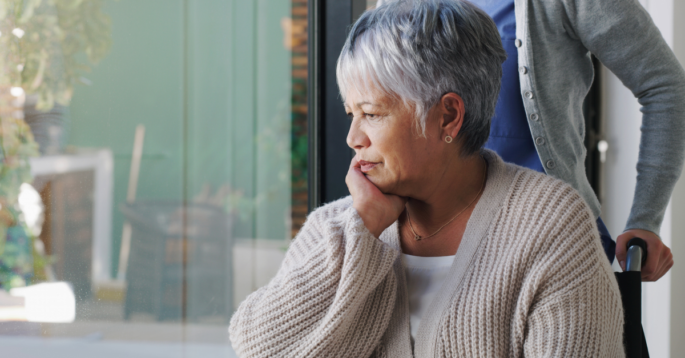Nursing home abuse is, unfortunately, too common. Between 2017 and 2018, the World Health Organization (WHO) reported that one in six adults 60 years old or older suffered abuse in a nursing home or long-term care facility. Women, especially women of color, are at an increased risk of abuse.
Earlier this month, the United Nations (UN) honored the International Day of Older Persons. The event celebrates the elderly around the world and the special contributions they have made. The theme for this year’s event was “The Resilience and Contributions of Older Women.”
In honor of this commemoration, learn about how you can support and protect the thousands of women nursing home residents across the country — women whose lives have impacted us all in tremendous ways.
Statistics for Women in Nursing Homes
Women make up a majority of the millions of Americans living in nursing homes across the country. The Centers for Disease Control and Prevention (CDC) reported in 2016 that women made up about 65% of nursing home residents.
While life expectancy has increased across the board, women are still expected to live, on average, five years longer than men. By 2030, it is projected that there will be a 50% increase in the number of elders over the age of 65 who will require nursing home care. Women are also more likely to need long-term care provided through nursing homes.
Women experience every type of nursing home abuse and neglect, including:
- Physical abuse
- Emotional, verbal, or psychological abuse
- Financial abuse
- Sexual abuse
Effects of Nursing Home Abuse Against Women
Nursing home abuse and neglect are frequently unreported. Because of this, these abused women often suffer in silence, which leads to further isolation and degradation of their quality of life. Unreported abuse may also cause residents to experience depression, anxiety, and other mental health conditions.
In more severe cases of abuse, physical injuries may go untreated if they are not promptly reported. This can lead to infection, bedsores, and even repeated injury — which could result in serious complications and even wrongful death.
What Causes Nursing Home Abuse?
Nursing home abuse and neglect have several causes, but one of the leading current causes is understaffing. Research indicates that as many as 95% of nursing facilities in the U.S. are understaffed.
Without proper staffing, nurses on duty are forced into working long hours. Additionally, nursing home staff members are more likely to make life-threatening mistakes due to fatigue from working extended shifts.
Other causes of nursing home abuse include:
- Employee burnout
- Facility mismanagement
- Lack of supervision and training
- Poor staff pay
Preventing Abuse of Women in Nursing Homes
There are several steps we can take to support nursing home residents, especially women patients, and prevent abuse from happening. Learn about what you can do below.
Be Vigilant of Nursing Home Abuse Warning Signs
The warning signs of abuse are sometimes difficult to spot. Communicate with the resident regularly and take note of any trends. Some physical signs of abuse could be bruises, fractures, poor hygiene, and weight loss.
There may also be signs of emotional abuse. These signs could include social isolation from other residents or loved ones, increased fears or concerns of being alone, and mumbled speech.
Research Nursing Home Facilities Carefully
There are nursing homes committed to reducing abuse and neglect. When choosing a facility for a loved one, be sure to ask the facility what they are doing to ensure all residents receive the care they deserve. Programs to prevent abuse could include regular staff training and clear processes to report grievances.
Coordinate Community Programming
Because nursing home residents are frequently left alone with few visitors, it may be helpful to reach out to local facilities to see if schools or other organizations could visit them. This programming could include arts and crafts or other activities to increase a sense of community, which could lead to increased feelings of safety and security.
Visit and Socialize with Residents Frequently
Similar to community programming, maintaining regular visits with residents in long-term care facilities is crucial to their well-being. It increases trust and opens pathways of communication in case mistreatment does occur.
Additionally, regular visits can reduce feelings of isolation and loneliness and increase feelings of belonging and happiness.
Help for Victims of Abuse in Nursing Homes or Long-Term Care Facilities
While we strive to protect the women around us from experiencing abuse, there are moments outside of our control. Nursing home abuse is a glaring problem exacerbated by staffing shortages and the COVID-19 pandemic.
Additionally, with an aging population and a longer life expectancy, more and more people may need to seek care in a nursing home — even though nursing home staffing continues to dwindle.
Because of these conditions, abuse too often goes unreported. Victims may also be too scared or unable to speak out due to cognitive impairments. That is why it is so important to report abuse at the first signs. Additionally, victims and their family members may seek legal help to hold abusers accountable.
Together we can honor the resilience and contributions of women of all ages and protect them from experiencing abuse from the people meant to care for them.

